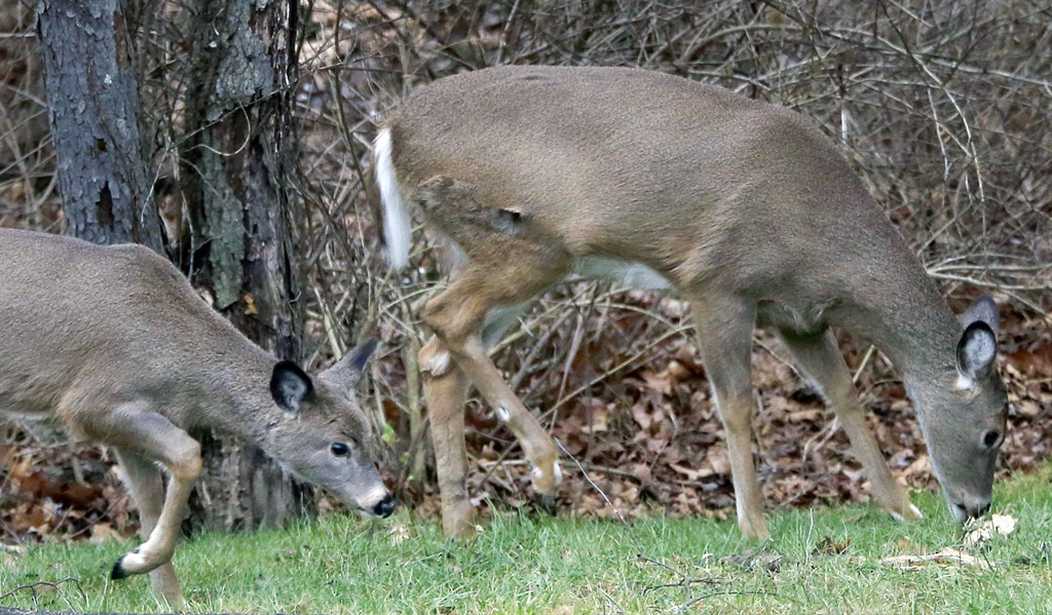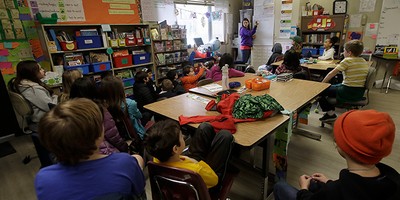An average American may not realize that chances at bagging a buck on the highway while driving are much greater than when hunting with a rifle in hand. Deer hunting seasons are now open in a majority of our states. But it is many the unfortunate driver who has already slain a deer with a vehicle.
A Cornell University study explored the growing problem of individual or small groups of deer venturing onto our highways. Collisions are usually fatal to the deer being struck, but may be also to car occupants, especially if the driver swerves out of control to avoid hitting the deer.
The research determined that some 29,000 vehicle collisions with deer occurred within the state of Wisconsin alone during 2022. An unspecified but comparably large number of additional collisions went unreported. It is assumed that proportionate levels of venison carnage occur in other states with large deer herds.
The sight of deer carcasses lying along the sides of Wisconsin’s highways becomes more frequent as the season moves forward into fall and winter.
The Wisconsin Department of Natural Resources (DNR) estimates an average 1.6 million deer make up the deer population in the state. The burgeoning population makes the prospect of colliding with a deer an ever-present reality for state drivers.
Other states, such as Minnesota, Michigan, Indiana, Ohio, and others boast similarly large deer herds. Today, deer, including the white-tail and mule deer, far outnumber what existed during colonial times. In our western states the annual fall migration of mule deer makes road crossings dangerous in areas where herds congregate and move.
Recommended
The price-tag connected with the annual slaughter on highways balloons the cost of vehicle repairs and increases insurance premiums. Together it amounts to billions annually.
Insurance carriers can and do raise rates to cover the cost of added claims. The deductible subtracted from the claim as submitted is usually in the order of $500 to $1,000—and generally speaking, that is enough to discourage a policy holder from filing a small nuisance claim.
Various interested parties have explored ways to discourage deer from presenting themselves as targets. For the most part, these well-meaning efforts have met with scant success.
The animals apparently lack fear of rapidly approaching objects. Whether during daylight hours or after dark, their lack of a key survival instinct connected with highway traffic is unfortunate for both the deer and for the next unsuspecting motorist.
Wherever deer are hunted, they keenly sense (by sight, sound, and smell) the presence of people and flee the instant they catch a whiff of human scent. But this flight instinct seems not to apply to the sounds of approaching cars or trucks. Often the animal may stand watching nonchalantly in the middle of the highway as headlights bear down.
The best available method for reducing deer collisions (as with moose, elk and bear) is to fence off roadways and provide crossovers (underpasses and overpasses). Although it is a very effective method, it is very costly to implement.
Despite high cost, certain portions of interstate highway in eastern states like New Jersey and Virginia feature these barriers that effectively prevent deer from entering the roadway proper. To be effective the fencing must stand eight-feet high to prevent deer from leaping over it.
The Cornell study reviewed other methods to discourage deer from entering roadways—each proved of very limited utility. The installation of reflectors to redirect headlight beams was intended to frighten deer away from roadways. But the deer were mostly unimpressed, much as crows ignore the scarecrow.
Another devise was an ultrasonic whistle that attaches to the front of a vehicle, emitting high-pitched sounds inaudible to humans. Deer also ignore moving dog whistles.
Highway planners turned to the challenge of modifying human behavior. If drivers could be persuaded to slow down and pay closer attention while driving, deer collisions would necessarily drop. It was another good idea relegated to the waste basket. It seems typical drivers are more interested in getting to their destinations quickly than safely—whether in deer country or not.
Concerted efforts by rangers in Canada’s Banff National Park posted slow-down-and-live signs throughout areas where buffalo, moose and elk roam. The benefits were minimal.
The higher speeds afforded by late model vehicles play a significant role in the rise in deer collisions. The temptation to exceed posted speed limits or to drive at speeds unjustifiable under adverse weather conditions or after dark accounts for much of the road-kill involving deer and also in the recent rise in highway fatalities in general.
Many states continue to encourage legal deer hunting. The efforts may be helping to mitigate even worse statistics.
The Town of Princeton, New Jersey passed an ordinance several years ago prohibiting the discharge of a fire arm within its jurisdiction. In less than 10 years following its implementation, the number of deer collisions swelled more than six-fold, as the population expanded without bound. Town officials since have recruited bow hunters to help stem the tide.
The more wild country is becoming urbanized and part of the outlying suburbs, the resident deer have successfully adapted to life in small woodlots and brush cover. There is ample forage provided in the shrubbery that surrounds suburban homes and gardens to support a doe and fawns for a season.
Before arrival of the Europeans settlers, who eradicated the gray wolf, deer numbers were held in check by natural predation. By the latter half of the 20th Century the wolves were extirpated from nearly their entire range in the eastern half of the United States. Since then, many areas became overpopulated with the deer. And so, the carnage on the highways continues to his day.
As the fall reproductive season approaches in areas heavily populated by deer, increasing road kill will soon be evident along roadsides. The next carcass may represent a substantial repair bill amounting to several thousand dollars for the unfortunate owner (or the insurance carrier) of the vehicle that collided with the dead animal.
No real economic benefit derives from these accidents.
William D. Balgord, heads Environmental & Resources Technology, Inc.in Middleton, Wisc.

























Join the conversation as a VIP Member